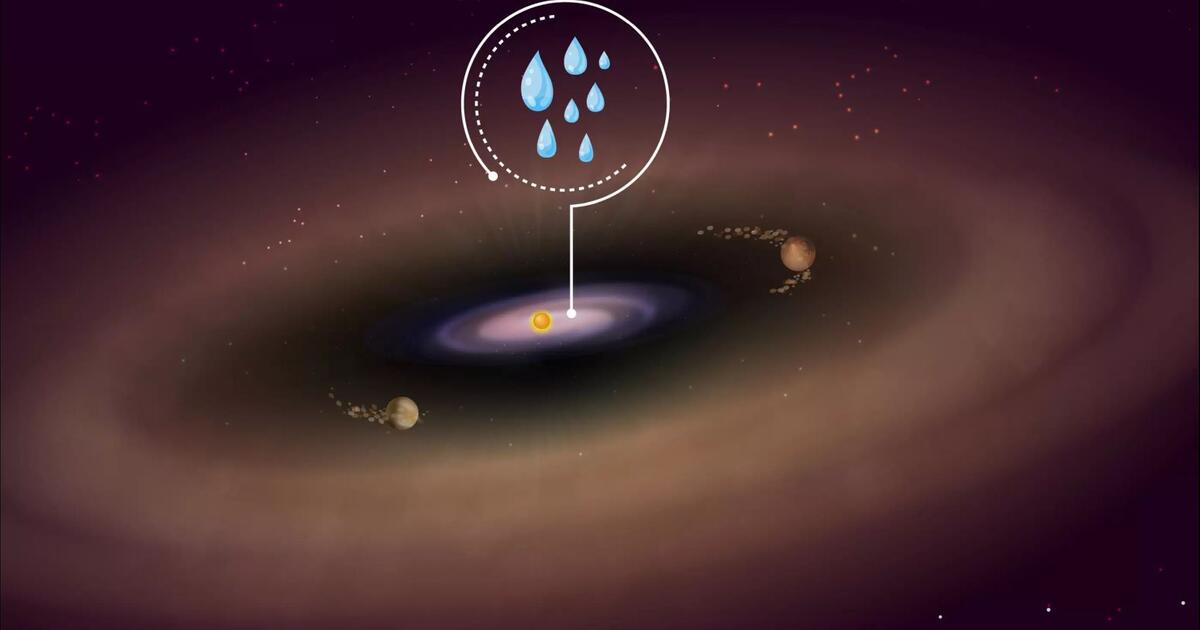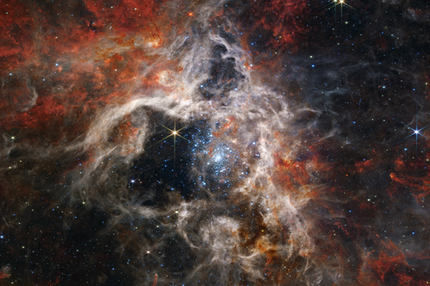Using the James Webb Space Telescope, scientists made a startling discovery: They found water in a region where Earth-like planets would normally form. Water can be present on Earth from birth.
Without water, there would be no life on earth. But how did you actually get there? By water-bearing asteroids impacting the surface of a young planet. At least this is the mechanism astronomers prefer.
However, according to the new findings, this may not be the only way to obtain life-friendly planetary water. They can already be supplied while they are being configured:
We may now have found evidence that water may be one of the first ingredients for rocky planets, present from birth.
The researchers published their results in the journal “Nature”.
The hot steam has a temperature of 330°C
With the help of the James Webb Space Telescope, scientists have been able to detect water in the planet-forming disk of the young star PDS 70. PDS 70 is about 370 light-years from Earth and is about 5.4 million years old.
Near the center of the disk, which is made up of gas and dust, they detected hot steam with a temperature of 330 degrees Celsius. Earth-like planets usually form in this region. It is also the region of the solar system where the rocky planets revolve around the sun.
The mids of high-end, low-dust discs may not be so dry after all
PDS 70 is one Press release from the Max Planck Institute for Astronomy (MPIA) It is said to be the first relatively ancient disk in which astronomers have found water. The gas and dust content of the planet-forming disks decreases over time. Among other things, radiation or winds from the central star can remove matter.
So far, studies have not been able to detect water in the interiors of similarly developed discs. Therefore, scientists assumed that it could not survive the stellar radiation. They hypothesized that dry environments existed during the formation of the rocky planets.
However, the results show that the central regions of the well-developed and scattered discs may not be as dry as previously thought. Many of the Earth-like planets that formed here were probably born with water.
Also read: James Webb Telescope: NASA releases stunning image of Saturn
Star PDS 70: So far, there is no evidence of planets near the center
According to the announcement, there has so far been no evidence of planets near the center of PDS-70’s disk. However, any rocky planets that form near the star would benefit from a large reservoir of water early on. This, in turn, “improves the chances of life later.” This could be an additional mechanism that could be sustainable.
Further research will eventually reveal whether the star PDS 70 is just an exception, or whether water is common in planet-forming regions around young stars. Where does the water come from anyway? Researchers cannot yet answer this question either.
Sources used:
- mpia.de: Water detected in an area where Earth-like planets usually form
- Nature.com: Water in the terrestrial planet-forming region of PDS 70

“Prone to fits of apathy. Zombie ninja. Entrepreneur. Organizer. Evil travel aficionado. Coffee practitioner. Beer lover.”








More Stories
Do you already know Ruona? -Dukchik
The “Dragon” must move to the International Space Station
Mysterious methane on Mars: NASA has a new theory